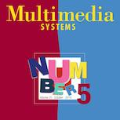Objective: Multiple Sclerosis (MS) is an autoimmune, and demyelinating disease that leads to lesions in the central nervous system. This disease can be tracked and diagnosed using Magnetic Resonance Imaging (MRI). Up to now a multitude of multimodality automatic biomedical approaches is used to segment lesions which are not beneficial for patients in terms of cost, time, and usability. The authors of the present paper propose a method employing just one modality (FLAIR image) to segment MS lesions accurately. Methods: A patch-based Convolutional Neural Network (CNN) is designed, inspired by 3D-ResNet and spatial-channel attention module, to segment MS lesions. The proposed method consists of three stages: (1) the contrast-limited adaptive histogram equalization (CLAHE) is applied to the original images and concatenated to the extracted edges in order to create 4D images; (2) the patches of size 80 * 80 * 80 * 2 are randomly selected from the 4D images; and (3) the extracted patches are passed into an attention-based CNN which is used to segment the lesions. Finally, the proposed method was compared to previous studies of the same dataset. Results: The current study evaluates the model, with a test set of ISIB challenge data. Experimental results illustrate that the proposed approach significantly surpasses existing methods in terms of Dice similarity and Absolute Volume Difference while the proposed method use just one modality (FLAIR) to segment the lesions. Conclusions: The authors have introduced an automated approach to segment the lesions which is based on, at most, two modalities as an input. The proposed architecture is composed of convolution, deconvolution, and an SCA-VoxRes module as an attention module. The results show, the proposed method outperforms well compare to other methods.
翻译:目标: 多发性硬化(MS) 是一种自动免疫, 并会分解疾病, 导致中神经系统中的损伤。 这种疾病可以用磁共振成像(MRI) 来跟踪和诊断。 到目前为止, 多种多式自动生物医学方法被用于分解损伤, 在成本、 时间和可用性方面对病人没有好处。 本文件的作者建议了一种方法, 仅使用一种模式( FLAIR 图像) 来准确分解 MS 。 方法 : 由 3D- ResNet 和 空间分流关注模块来激励, 并用 secondition 神经网络( CNN) 。 在 3D- RENet 和 空间分流关注模块中, 该疾病可以跟踪并诊断 。 提议的方法包括三个阶段:(1) 在原始图像中应用了对比性调整性调整性直方图( CLAHEHE), 将其连接到提取的边缘 ; (2) 80 * 80 * * 2 直径 2 随机选择从 4D 图像中选取; (3) 提取的分解性神经网络网络网络网络网络网络网络网络网络网络, 将两种分解结果转化为,, 该方法用于分析方法, 该方法用于 。




